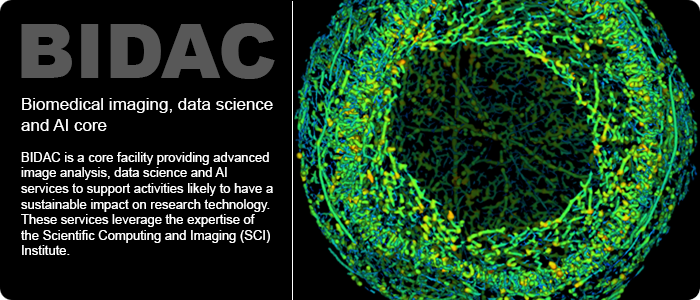Departments: Dept. Civil and Environment Engineering, SCI Institute
Project:
Nuclear forensics aims to investigate the origin and history of nuclear or radioactive materials via analytical techniques. Using microscopy images, we aim to perform deep learning analysis to assess multiple calcination conditions and processing routes of nuclear samples.
Progress:
We applied, compared and fine-tuned via transfer learning state-of-the-art convolutional neural networks (CNN), performing various classification and regression tasks. In addition to applying standard neural network architectures (ResNet, DenseNet), we implemented parallel networks for multi-magnification acquisitions, and quantified model uncertainty during inference.

Publications:
- C. Nizinski, C. Ly, C. Vachet, A. Hagen, T. Tasdizen, L.W. McDonald IV, Characterization of uncertainties and model generalizability for convolutional neural network predictions of uranium ore concentrate morphology, Chemometrics and Intelligent Laboratory Systems, Volume 25, 2022
- C. Ly, C. Nizinski, A. Toydemir, C. Vachet, L.W. McDonald IV, T. Tasdizen,Determining the Composition of a Mixed Material with Synthetic Data, Microscopy and Microanalysis, Volume 27, 2021
- C. Ly, C. Vachet, I. J. Schwerd, E. Abbott, A. Brenkmann, L. W. McDonald, T. Tasdizen, Determining uranium ore concentrates and their calcination products via image classification of multiple magnifications, Journal of Nuclear Materials, 2020
- A. B. Hanson, R. N. Lee, C. Vachet, I. J. Schwerdt, T. Tasdizen, L. W. McDonald IV. “Quantifying Impurity Effects on the Surface Morphology of α-U3O8,” In Analytical Chemistry, 2019
- S. T. Heffernan, N. Ly, B. J. Mower, C. Vachet, I. J. Schwerdt, T. Tasdizen, L. W. McDonald IV. “Identifying surface morphological characteristics to differentiate between mixtures of U3O8 synthesized from ammonium diuranate and uranyl peroxide,” In Radiochimica Acta, 2019.
